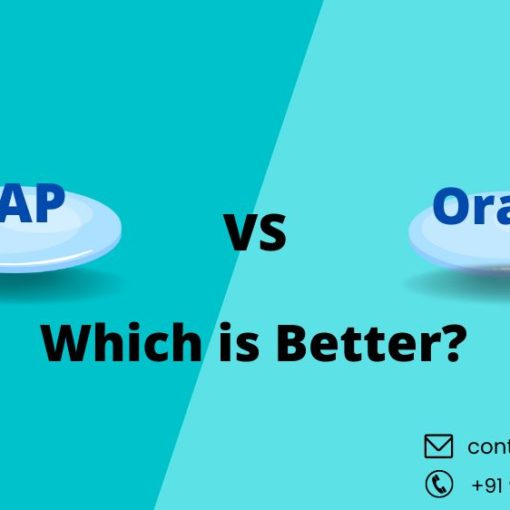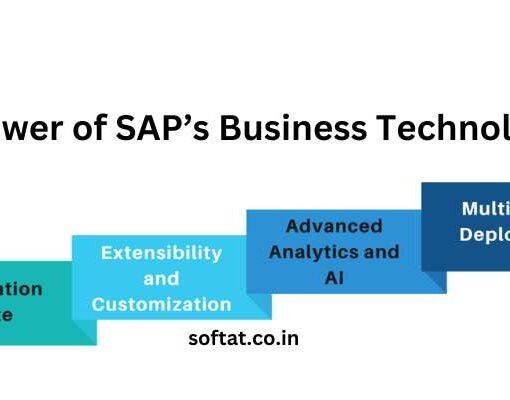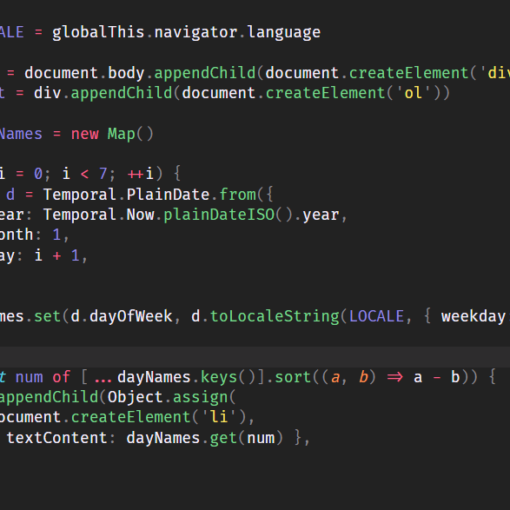What is Sales & Operations Planning?
S&OP (sales operations planning) is a method of better aligning a manufacturer‘s supply with demand by collaborating with operations to generate a unified production plan. The overall goal is to make daily operations more aligned with company goals.
In fact, various departments involved in the demand and supply sides of the equation, such as marketing, procurement, manufacturing, transportation, and finance, usually participate in S&OP.
Despite the fact that S&OP has been practiced for decades, smart technologies such as artificial intelligence (AI) and machine learning have revolutionized modern S&OP processes. For sales and operations planning, leadership teams used a combination of spreadsheets and isolated programs in the not-too-distant past. Spreadsheets, on the other hand, are rigid and inefficient; they don’t allow organizations to perform what-if scenarios or adjust fast to market changes, nor can they facilitate planning across various divisions and locations.
S&OP, when properly implemented, allows firms to take a holistic approach to plan that maximizes opportunities while minimizing risks. It produces a globally optimized program that helps deliver what consumers require while emphasizing the broader corporate strategy by allowing operational areas to include their capabilities and restrictions in the planning process.
S&OP Benefits
As a collaborative process that balances supply and demand, the benefits of S&OP include:
1. Higher Profitability: The S&OP process aids in the creation of a well-balanced plan. It improves customer experience, decreases inventory, minimizes waste, and helps companies accomplish financial goals- all of which are critical in today’s dynamic supply chain.
2. Better decision-making: Planners can use S&OP software tools to execute simulations of demand or supply changes throughout the planning cycle, resulting in what-if assessments that help them make better decisions. As planners react to an ever-changing supply and demand environment, these simulation tools give day-to-day decision support.
3. A shorter planning process: Modern software and a technologically enhanced approach to S&OP bring structure to the planning process and automate much of the necessary data gathering, analysis, and processing, putting actionable information at the fingertips of planners. It also improves accuracy, produces better outcomes, and cuts the S&OP cycle in half.
4. Improved cross-departmental collaboration: S&OP encourages cross-departmental cooperation in order to establish plans that are coordinated across all functional areas and the entire organization. S&OP reduces departmental silos, builds consensus, and keeps numerous teams focused on the same goals by enhancing communication.
5. Continuous feedback loop: The continuous S&OP framework allows for regular, systematic reporting and monitoring of actual performance against plans. This enables teams to quickly rectify any departmental mismatch and to continually enhance operational and strategic strategies.
S&OP Process Workflow
- Workspace preparation: Information on the performance of the present plan is collected, trends are studied, and forecast accuracy is assessed during this data-gathering phase. It’s critical to identify who will be participating in this stage of the process and allocate tasks utilizing visual planning tools online.
- Demand forecasting: Following the preparation of the workspace, updated statistical projections are generated. These include a holistic mix of data, including one-time sales events, new market trends, new product debuts, and price changes- as well as intelligence, such as rival maneuvers and external economic or demographic effects. As a result, a demand plan based on consensus emerges.
- Supply planning: The supply plan balances customer services objectives – such as meeting demand, ensuring on-time deliveries, and accounting for returns – against inventory and operating costs. It also shows how resources are used, as well as any conflicts, resource restrictions, inability to meet requirements, and the consequent service levels. This strategy yields an inventory forecast for the entire time horizon.
- Review and reconciliation of the plan: Following the generation of demand and supply plans, the planning team, which includes key decision-makers from each functional area of the business, reviews the plans and fine-tunes and improves them using analysis and simulation techniques. This is where any modifications are needed to better employ resources, satisfy predicted demand, and meet financial goals and objectives are agreed upon.
- S&OP plan finalization and release: The final step of the S&OP process is to present the optimized, finalized plans to senior management so they can be approved and released for implementation.
Sales and Operations Planning in SAP IBP
The capacity to respond to the massive changes in business is crucial for SAP to stay in the game. Customers’ demands for rapid product innovation and delivery, as well as customer knowledge of alternatives, are particularly problematic (via Social Networks and the Web). SAP’s software must help firms to transform Supply Chains into Demand Networks in order to respond to customer needs more quickly.
So where does S&OP sit?
To begin, it’s helpful to consider how SAP classifies its supply chain portfolio:

- Every product uses SAP HANA to store and analyze the massive amounts of data involved, while the SAP Business Suite(with ECC or S/4HANA) serves as the System of Record.
- Users demand a User Experience identical to what they get on their tablets and smartphones every day. As a result, mobile user interfaces are provided.
There is a progression from deciding what to do, how to do it, and actually executing it within the center of the diagram moving from left to right from “planning,” “network,” and “logistics.” S&OP is located at the far left of the planning grid.
First and foremost, we must understand that SAP’s Integrated Business Planning is not merely a product name. It’s a planning method devised by the Oliver Wight company (the same organization which originally developed and promoted the process they called S&OP in the 1980s).
In the SAP world, IBP refers to a group of products, one of which being S&OP. Although some of these capabilities may fall outside of Oliver Wight’s definition of IBP, they are all planning solutions that are aimed to allow a broader scope of the organization to cooperate to make choices than supply chain planners.
Most of SAP’s IBP products are available in the current release 5.0. Meanwhile, IBP Response as part of a re-branded Response and Supply is planned for the future. All these products do not just run on HANA, but were developed to run on HANA – a very important distinction when it comes to performance!
SAP IBP for Sales & Operations Planning Capabilities
- COLLABORATION & UNIFIED PLANNING ENVIRONMENT: SAP IBP provides a unified data model for cross-business activities. This aids in the re-alignment of functions toward common organizational goals. The flow of information between business units is transparent and real-time. As a result, demand and supply planners can collaborate in order to meet corporate financial goals. This enables effective decision-making in both the planning and operational phases.
- ADVANCED DASHBOARDS & ANALYTICS, AS WELL AS SEAMLESS INTEGRATION: Through SAP’s Cloud Platform Integration services, SAP IBP may be effortlessly linked with other SAP and non-SAP IT systems, on-cloud or on-premise. This allows data to flow quickly into the Unified Data Model of an IBP. The planners can visualize crucial supply chain features in real-time and make precise, fast decisions, which is critical for an effective S&OP process, thanks to IBP’s Advanced Analytics & intuitive Dashboards capability powered by HANA.
- PAST PLAN ASSUMPTIONS, KEY DECISIONS, AND REASONS DOCUMENTATION AND TRACKING: Each S&OP cycle, as well as decisions, conversations, and approvals, can be recorded using IBP’s Integrated reporting. Preconfigured apps incorporated into the program make it simple to retrieve data from past cycles as well as various forms of commentary.
Best Practices for Successful Sales & Operations Planning
- Executive Leadership: S&OP requires strong executive leadership and commitment. Top-level support ensures organizational buy-in, fosters collaboration, and enables effective decision-making.
- Cross-Functional Collaboration: Active involvement and collaboration among sales, operations, finance, and other relevant teams are essential for successful S&OP. Establishing a cross-functional S&OP team and promoting open communication channels facilitate alignment and consensus.
- Data-Driven Approach: S&OP relies on accurate and timely data. Investing in robust data management systems, leveraging advanced analytics tools, and establishing key performance indicators (KPIs) enable organizations to make informed decisions based on reliable data insights.
- Continuous Improvement: S&OP is an iterative process. Regularly reviewing and evaluating performance metrics, identifying areas for improvement, and implementing corrective actions ensure ongoing optimization and effectiveness of the S&OP process.
Conclusion
Sales and Operations Planning (S&OP) acts as a strategic process that aligns demand and supply within organizations. By integrating sales forecasts, production capacities, and financial goals, S&OP enables businesses to optimize operational efficiency, enhance customer service, and drive business success. Embracing the key components, benefits, and best practices of S&OP empowers organizations to make informed decisions, adapt to market dynamics, and thrive in today’s competitive landscape.





